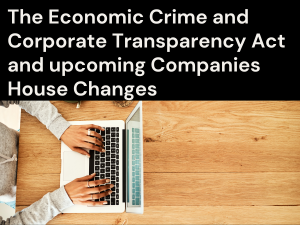When it comes to closing a limited company, one thing on many directors’ minds is quite rightly how to extract the most value out of it. To do that, the company must be closed in a way that is as tax-efficient as possible.
And whilst it is feasible to shut your limited business without paying taxes, this only covers you up to the extent of your yearly tax-free allowance.
Read on to learn how to close down your limited company without paying tax, what options are available to you, and what important requirements you need to take into consideration when doing so.
1. Settle any outstanding financial obligations.
If your company owes money, is owed money that still needs collecting from clients, or simply needs to settle any running costs that could be incurred from the date you begin the process of closure, these financial obligations must be settled before the company is officially deregistered.
If your company runs a PAYE scheme, HMRC will need to be informed that it is no longer in operation so that it can be wound to a close. Additionally, if you are VAT registered and also registered for Corporation Tax, these two expenditures have separate processes that need to be completed before you can officially begin the closure process.
2. If you are VAT registered:
- Inform HMRC of your decision to deregister by completing a VAT 7 form.
- HMRC will contact you with a deregistration date once the form is received, however you must not stop accounting for VAT until HMRC has confirmed the date.
Accountants can help with these tasks. Find out when else you might need to hire one.
A final VAT return will be issued for completion that will account for any leftover stock or equipment your business owns.
3. If you are registered for Corporation Tax:
- Inform HMRC that your company is set to cease trading to ensure the prevention of HMRC sending further notifications for filing company tax returns.
- If your company has never had a notification to file a company tax return, nor has ever filed one you will need to seek guidance from HMRC regarding their dormant tax policies.
4. Assess whether you are eligible for business asset disposal relief
To apply for Business Asset Disposal Relief (which is a tax relief available to individuals rather than businesses), you must meet the eligibility requirements for the two years before the company’s shut down date. Eligibility criteria include:
- Being an office holder/employee of the company
- Holding at least 5% of the share capital and 5% of voting rights at the time of asset disposal or sale
- Not exceeding your lifetime limit of £1 million – this applies to capital gains, and any gains above this threshold are subject to Capital Gains Tax at the full rate
- The company must be a trading company or a holding company of a trading group
5. Identify whether your company is solvent or insolvent.
A large part of the process of closing down a limited company rests upon whether a company is deemed solvent or insolvent. Figuring out which your company is can be assessed by judging:
If your company has more business assets than liabilities and can instantly pay its debts. If this is the case, your company is solvent and can therefore pay its liabilities.
If your company does not have more assets than liabilities, and is not in a position to pay its debts. This is when your company is insolvent.
We’ve broken down the various processes available to you for both solvent and insolvent companies.
An accountant can help to identify whether your company is solvent or insolvent. Find out whether you need one.
Close down your Solvent Company.
There are two choices available to you when it comes to choosing to close down your solvent company.
Option One: Voluntary Strike Off
A voluntary strike off, also known as a company dissolution, is only recommended to a solvent company if the distribution to shareholders is less than £25,000. Where it is under £25,000 it will be subject to Capital Gains Tax (CGT), which has a lower rate than if it were regarded as income. However, if you’re close to or don’t know how much the distribution will be, you’ll need to seek professional advice.
To begin a process of dissolution, a company director will need to submit a striking off form, known as a DS01 form, to Companies House. This must be signed and agreed by all the directors of the company, and copies of the form must be distributed to any shareholders, creditors and/or employees within a week of submitting. A cheque will need to be enclosed alongside the form of £10, and must come from an account not associated with the business.
When the form has been received, Companies House will publish a notice in an official public record in Belfast, Edinburgh or London – depending on where your company was registered – which provides traditional, official notice to any third parties who could be unaware of the closure and want to object. If no objections are made, your company will be dissolved within 2 months of submitting the form.
Once your company is struck off the register in Companies House it ceases to exist, which means you will be unable to trade or undertake any business activities through the limited company. Therefore any profits that need to be distributed from the assets held by your company must be correctly transferred to its shareholders before the form is filed.
Note that if the company is dissolved when it still has some assets these will automatically become the property of the Crown. It is therefore essential that you undertake the correct procedures prior to dissolving the company to reduce the value of its assets to as low as possible, typically just £1.
It’s worth adding that a strike off is an informal process, and if a creditor were to come out of the woodwork and make a claim against the dissolved company it can request that the company is reinstated. This is one of the main attractions of a members voluntary liquidation, which provides a more formal elimination.
Option Two: Members Voluntary Liquidation (MVL)
Often reserved for limited company directors looking to retire, the cost of closing an MVL begins at £2,250, which only makes it a viable option if there is more than £35,000 in company retained profits.
A Members Voluntary Liquidation is the most tax-efficient method chosen by most directors when it comes to closing down a solvent company. This is due to the fact that, in most cases, when closing down a limited business, any remaining profit will be paid out as a dividend, resulting in the need to pay income tax on the amount.
With an MVL however, the remaining profits within the company are evenly distributed between shareholders as capital, as opposed to dividends and a director won’t pay tax up to the amount of their annual tax free allowance.
Where the distribution is greater than this, then for family owned businesses and entrepreneurs, who qualify for business asset disposal relief, the gain will only be taxed at 10%. This is significantly lower than income tax rates which could be 32.5% or 38.1%. This can save business owners tens of thousands when closing their company, and makes the cost of the MVL insignificant compared to the tax saved.
To apply for a Members Voluntary Liquidation, the majority of directors – at least over 75% – must sign a declaration of solvency and shareholders must agree to a resolution for the voluntary winding up of the company. Just like a Dissolution, Companies House will publish the resolution in an official public record within two weeks of receiving the MVL.
In the meantime, an authorised insolvency practitioner must be appointed as a liquidator to take charge of winding up the company, and once their appointment is confirmed they will take sole charge of the limited company. Once 15 days have passed since forming the resolution, Companies House will need to be informed by the insolvency practitioner of the decision.
Close down your insolvent company.
The route to closing down an insolvent company is much more straightforward. If all company directors and shareholders are in agreement of the company’s insolvency, all that is required is a Creditors Voluntary Liquidation (CVL) to complete the shut down.
Similarly to the Members Voluntary Liquidation (MVL), at least over 75% of the company directors must be in agreement with a winding-up resolution, and you will also need to speak to a licensed insolvency practitioner who can assist you with the next stages. Each CVL process differs due to the size of the business and the tallying and distributing of company assets to parties it owes money to.
Upon completion of the process and the fair distribution of any assets, the company will be struck off from the Companies House register and will no longer exist to trade.
6. Make your Company Dormant
Whether your company is insolvent or solvent, if you’re uncertain about permanently striking off your company, or you just want a short break to either return to full-time employment, or to transition to a sole trader, you can simply leave your limited company dormant.
You will need to inform HMRC that your company is dormant through a dormancy statement, and also through the paperwork you file such as your annual confirmation statement, annual accounts and tax returns. For example, whilst you will still need to submit your tax returns, stating ‘nil return’ alongside zeros on the form will show your company is not trading.
To conclude:
At Raw, we can offer further information and guidance on closing your limited company in the most tax-efficient manner. We have years of experience in helping limited company directors to extract the maximum value from their business.
Get in touch with our chartered accountants today and let us save you money.






